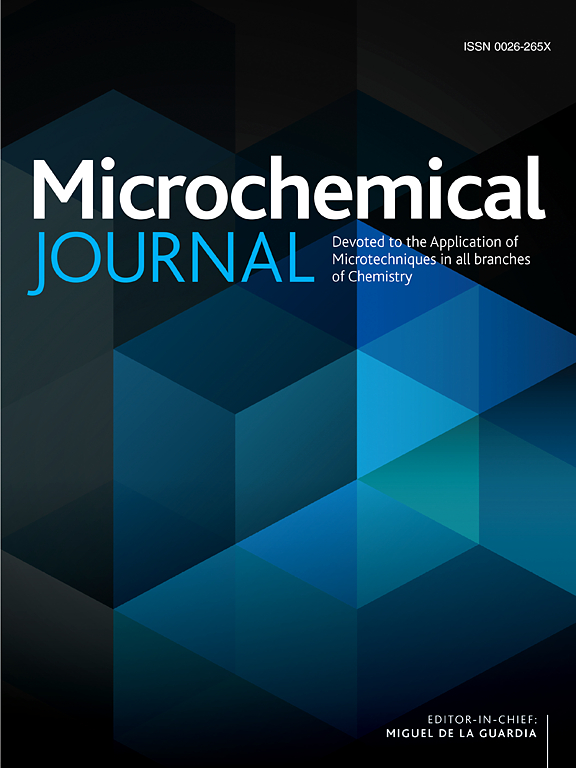授权前列腺癌的早期检测:一个点护理生物传感的观点
IF 4.9
2区 化学
Q1 CHEMISTRY, ANALYTICAL
引用次数: 0
摘要
前列腺癌(PCa)是全球主要的肿瘤负担,其疾病进展与临床检测的及时性和准确性密切相关。尽管广泛使用,传统的诊断方法,包括前列腺特异性抗原测定、直肠指检和超声引导活检,都存在显著的局限性,如生物标志物特异性差、侵入性和操作人员之间的可变性,导致过度诊断和过度治疗。生物传感器工程的最新进展使高灵敏度、选择性和多路护理点诊断系统的发展成为可能,该系统可以定量检测无创生物流体中的pca相关生物标志物,只需最少的样品处理。本文回顾了目前PCa的POC生物传感策略,重点关注电化学、光学和场效应晶体管(FET)平台,这些平台具有高亲和力的生物识别元件,如抗体、适体和合成受体。我们强调了临床验证的和新兴的分子靶标,包括PSA亚型、PCA3、TMPRSS2-ERG融合转录物、外泌体rna和循环肿瘤细胞,并评估了它们在集成传感器系统中的诊断性能。重点放在纳米结构换能器界面(如石墨烯、MXenes、金属有机框架和量子点)在提高信噪比、降低飞摩尔范围的检测限制和实现多模态传感方面的作用。此外,将机器学习(ML)和可解释的人工智能(XAI)算法集成到生物传感器数据工作流程中,作为从高维、多生物标志物数据集中提取临床可操作见解的一种手段。这些智能系统有助于个体化风险评估,改进模棱两可病例的分类,以及数据驱动的临床决策。最后,我们解决了与设备可重复性、法规遵从性、长期稳定性和在低资源环境下部署相关的转化挑战。总之,先进材料、实时分析和无创样本获取之间的协同作用使下一代生物传感技术成为未来精确诊断和全球前列腺癌管理的基石。本文章由计算机程序翻译,如有差异,请以英文原文为准。

Empowering early detection of prostate cancer: a point-of-care biosensing perspective
Prostate cancer (PCa) is a major oncological burden globally, with disease progression closely linked to the timeliness and accuracy of clinical detection. Despite widespread use, conventional diagnostic approaches, including prostate-specific antigen assays, digital rectal examination, and ultrasound-guided biopsy, suffer from significant limitations such as poor biomarker specificity, invasiveness, and inter-operator variability, contributing to overdiagnosis and overtreatment. Recent advances in biosensor engineering have enabled the development of highly sensitive, selective, and multiplexed point-of-care diagnostic systems that can quantitatively detect PCa-associated biomarkers in noninvasive biological fluids with minimal sample processing. This review critically examines the current landscape of POC biosensing strategies for PCa, focusing on electrochemical, optical, and field-effect transistor (FET)-based platforms functionalized with high-affinity biorecognition elements such as antibodies, aptamers, and synthetic receptors. We highlight clinically validated and emerging molecular targets, including PSA isoforms, PCA3, TMPRSS2–ERG fusion transcripts, exosomal RNAs, and circulating tumor cells, and evaluate their diagnostic performance in integrated sensor systems. Emphasis is placed on the role of nanostructured transducer interfaces such as graphene, MXenes, metal–organic frameworks, and quantum dots in enhancing signal-to-noise ratios, lowering detection limits to the femtomolar range, and enabling multimodal sensing. Moreover, the integration of machine learning (ML) and explainable artificial intelligence (XAI) algorithms into biosensor data workflows is discussed as a means to extract clinically actionable insights from high-dimensional, multi-biomarker datasets. These intelligent systems facilitate individualized risk assessment, improved classification of equivocal cases, and data-driven clinical decision-making. Finally, we address translational challenges related to device reproducibility, regulatory compliance, long-term stability, and deployment in low-resource settings. Collectively, the synergy between advanced materials, real-time analytics, and noninvasive sample access positions next-generation biosensing technologies as a cornerstone in the future of precision diagnostics and global prostate cancer management.
求助全文
通过发布文献求助,成功后即可免费获取论文全文。
去求助
来源期刊

Microchemical Journal
化学-分析化学
CiteScore
8.70
自引率
8.30%
发文量
1131
审稿时长
1.9 months
期刊介绍:
The Microchemical Journal is a peer reviewed journal devoted to all aspects and phases of analytical chemistry and chemical analysis. The Microchemical Journal publishes articles which are at the forefront of modern analytical chemistry and cover innovations in the techniques to the finest possible limits. This includes fundamental aspects, instrumentation, new developments, innovative and novel methods and applications including environmental and clinical field.
Traditional classical analytical methods such as spectrophotometry and titrimetry as well as established instrumentation methods such as flame and graphite furnace atomic absorption spectrometry, gas chromatography, and modified glassy or carbon electrode electrochemical methods will be considered, provided they show significant improvements and novelty compared to the established methods.
 求助内容:
求助内容: 应助结果提醒方式:
应助结果提醒方式:


